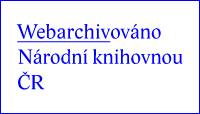Reviewing special monographs for the periodical Knihovna – basic instructions for authors
The task of a review averaging 1 – 2 pages resides in acquainting the reader with the purpose and the contents of a book; also a certain rationale of the assessment is expected. The reviewer can add critical comments pointing to the details of the book under consideration.
The author often indicates the purpose of the book in his foreword or introduction. If this is not the case, the reviewer should offer his own characteristics of the book and its focus.
The reviewer considers whether the book meets the determined objectives and whether it can satisfy the needs of the given scientific discipline or the expectations of the anticipated group of readers.
The reviewer offers shorter or more comprehensive information about the contents of the book. He/she can express his/her opinion about the work and its conclusions in any place of the body of this survey or at the end as part of the final evaluation.
The future readers of the reviewed book will benefit from the indication whether there are references to sources, registers and/or adjoined appendices, information in table form etc. The reviewer should declare whether he/she finds the registers and references to be sufficiently clear and detailed, and whether, in his/her opinion, they can be helpful for the reader in a fast search for the needed information.
If the book comprises illustrations, their type and description should be given (drawings or photographs), their relation to the text, their emplacement (between the text, on special pages or at the end of the book). The same applies to maps, diagrams, graphics and all remaining types of enclosed visual documentation. Also the location of comments can be mentioned.
In addition to that the external outlook of the book deserves mentioning, in particular if its quality appears to be over the average or the opposite. Indeed, statements about the graphic design and the overall arrangement of the book are usually given only to the extent to which the book either exceeds certain habitual standards or does not reach them at all.
The final evaluation of the book by the reviewer should not be masked by too general statements or stereotypes. It should be clearly indicated wherein the positive contribution of the book can be found, or in what respect the book either may not meet the author´s aim, the justified needs and requirements of the scientific community or the expectations of the broader public.
The place of the new book should be clearly delimited both between publications of a similar type that can be replaced or complemented by the new title, and in a broader perspective within the range of the respective field of science.
It is possible to expand upon the relationship of the author to his predecessors and to evaluate the specific contribution in this light. It can be useful to classify which scientific school or orientation the author belongs to, what respective position he/she has assumed and how he/she copes with the situation in the given scientific domain.









